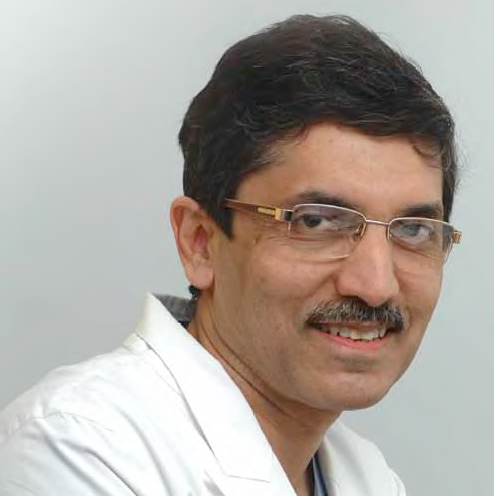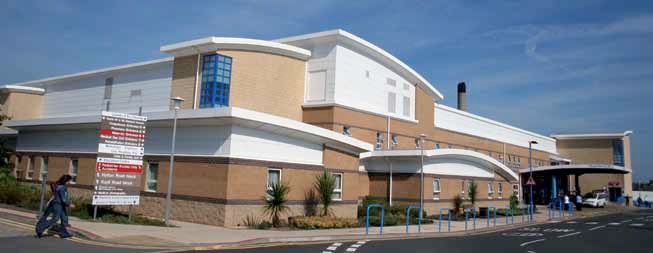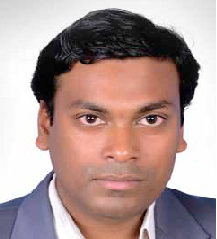
 Dr Sanjay Saran Baijal,
Dr Sanjay Saran Baijal,
Director of Interventional Radiology, Medanta
Having done major work in Gastro Intestinal interventions, management of Budd Chiari Syndrome and Portal Hyper Tension, Dr Sanjay Saran Baijal, Director of Interventional Radiology, Medanta, The Medicity, has a strong belief in the developing technologies to help patients. In conversation with Ekta Srivastava, ENN

Could you please give us brief idea about Radiology?
Interventional Radiology (IR) offers targeted, minimally-invasive therapeutic approaches that are viable alternatives to surgery.Some of the most common procedures include angioplasty, stenting, thrombolysis, embolisation, radiofrequency ablation, and biopsy. Interventional radiologists use their expertise in reading X-rays, ultrasound and other medical images to guide small instruments such as catheters through the blood vessels or other pathways to diagnose and even treat the disease percutaneously (through the skin). These procedures are typically much less invasive and cheaper than traditional surgery.
How is interventional radiology making difference in treating portal hypertension?
The role of the radiologist in the management of Portal Hypertension (PHT) has undergone a significant metamorphosis over the last few decades. Initially, it was limited to determining the presence and cause of PHT, using angiographic techniques such as percutaneous splenoportography, transhepatic portography, and arterioportography. For many years these procedures were conducted frequently for planning surgical treatment; later, they were replaced by safer and equally reliable modalities such as USG (ultrasonography), CT scan and CT angiography (CTA) and MRI and MRI angiography (MRA).
Progressively, the focus changed from diagnostic to therapeutic procedures. Interventions involving the portal venous system were introduced in the 1970s, beginning with transhepatic embolisation for control of gastric and esophageal variceal bleeding. The subsequent decade saw expansion in the variety of therapeutic interventions, with procedures such as transjugular intrahepatic portosystemic shunt, portal vein recanalisation,balloon-occluded retrograde transvenous obliteration of varices, hepatic venous outflow angioplasty, and revision of surgical shunts being rapidly introduced one after the other. Since then radiological interventions have become established methods in the treatment of PHT.
How has the impact of IR been on the treatment of liver tumour?
In cases of liver tumour , image guidance has evolved as very effective giving a lot of benefit with a very simple treatment, quick recovery time and a low risk .It has a very good advantage where a patient would otherwise not be a good candidate for surgery or chemotherapy, particularly when the disease is at an early stage. The procedure is known as radio-embolisation treatment, however, multiple rounds of imaging are employed for treatment staging, planning, guidance, and follow up. Plus, the procedure itself uses radiation to kill the tumour. Interventionlists can identify the tumour-feeding vessels and be more selective when planning liver embolisation.
Radioembolisation begins with an angiogram to map the vasculature of the abdomen and plan therapy delivery. A CT scan is then administered to determine the size of the tumour or percentage of involvement of the liver to calculate the dose needed to treat the tumour. During the treatment, we need to get the catheter in place, and we use angiography to see how the blood is flowing as we deliver microspheres. There is then also follow-up imaging with CT, MRI, or PET.

| It is our belief that robotic systems will be an important part of future interventions, but more research and clinical trials are needed. The possibility of performing new clinical procedures that the human cannot achieve remains an ultimate goal for medical robotics |
Tell us something about Robotic Arms. What changes will these make to the IR?
This new technology means a broader group of patients who have complex diseases can now be operated on in a safe and less invasive manner, at the same time, this technology offers speedy recovery . Whereas surgeons would normally feed the catheter into the patients body by hand, the robot gives greater precision thus minimising risk of damage to the wall of the patients blood vessels .The procedure can also be completed quicker.
It is our belief that robotic systems will be an important part of future interventions, but more research and clinical trials are needed. The possibility of performing new clinical procedures that humans cannot achieve remains an ultimate goal for medical robotics. Even technologies like 3D imaging, 3 TeslaMRI and Angiograpy had made very significant changes in radiology.
What are some of the major problems that the radiologists in India are facing currently?
In tertiary set-ups, the owners can afford such kind of instrumentations and achieve the desirable or positive outcome, but in India we are not having so many super specialty centres. There are so many medium class setups which may not afford these expensive equipments, nevertheless they may have very good radiologists.
What is unique about Medantas Radiology department?
Medanta has one of the best equipped radiology departments with almost all the latest technology with Digital Mammography unit, Bone Densitometry Unit and Computed Radiography Units. The HIS and RIS are fully functional. The PACS is under installation. Apart from this, the department plays a very important and significant role in the overall healthcare delivery system and academic activities of the hospital. It also provides platform for research activities and plans to conduct various educational and research activities in near future.
As the Director of Radiology what major initiatives have you taken so far for the well-being of patients in the hospital?
As technology advances and highquality imaging equipments become more widely available, IR is able to offer patients and referral physicians a host of new treatment options .In the past, we as radiologists were only given some forms filled by clinicians or surgeons for some kind of investigations, radiologist did not know what was the actual case and what the clinician wanted to see. But now we are working as a team with surgeons and clinicians to give them best idea of investigation for every patient. Even as an interventional radiologist we are also treating many patients with minimal invasive procedures.We are also capable of doing many of the procedures such as bed side treatment thus increasing the chances of survival for very sick patients whom we cant shift to the procedure rooms.
Whats your message to the budding radiologists?
The only thing is that everyone should not have theoretical knowledge but also have the practical know-how of the specialty and in this new era they should not only think as the radiologist but also as a clinician and surgeon too.
Be a part of Elets Collaborative Initiatives. Join Us for Upcoming Events and explore business opportunities. Like us on Facebook , connect with us on LinkedIn and follow us on Twitter , Instagram.












